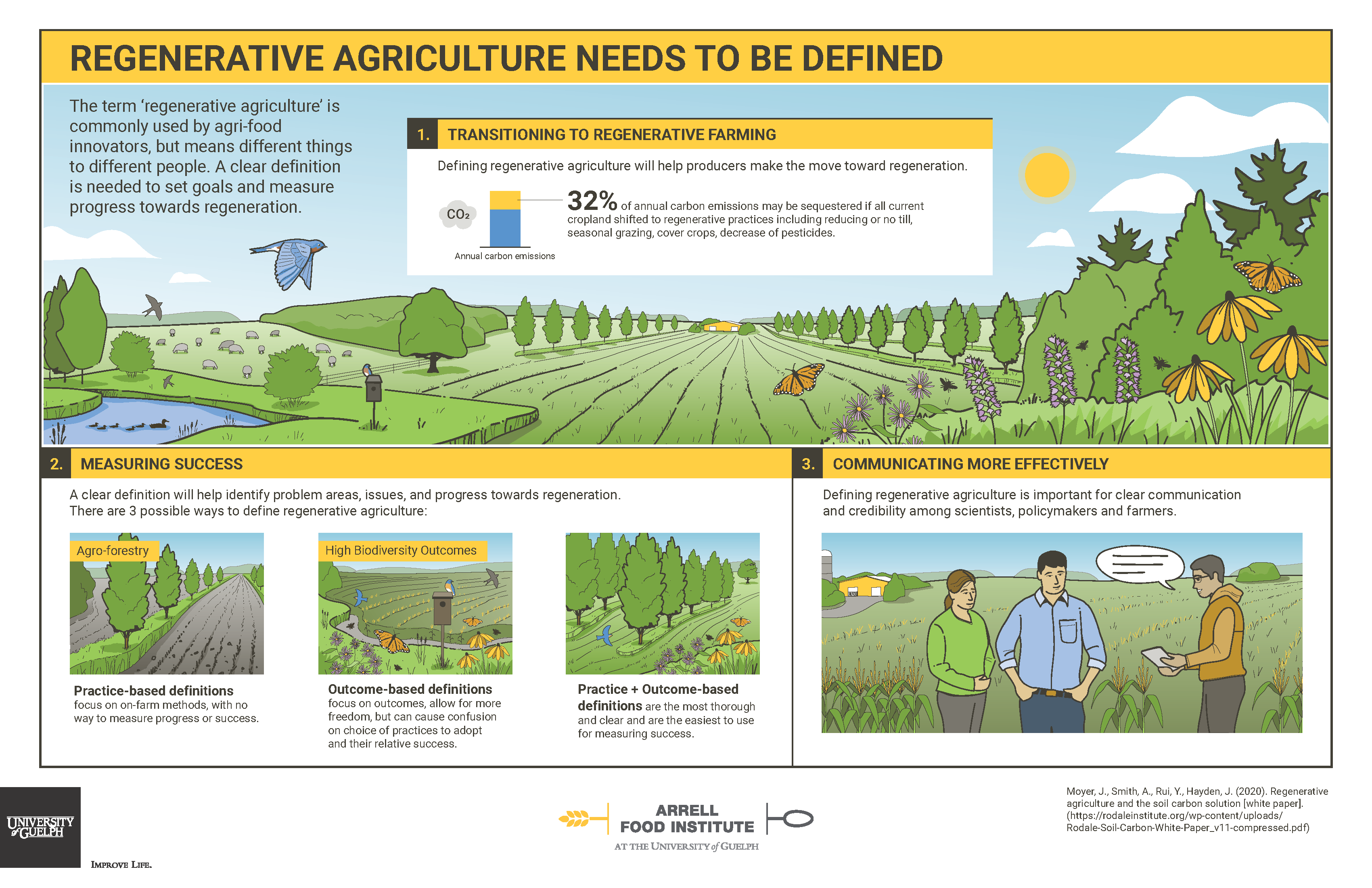If you ask someone in the agri-food sector to define regenerative agriculture, chances are the next person you ask will have a different response.
It’s become apparent that there is a significant issue when studying the presence of regenerative agriculture practices in Canada: there is no clear and common definition. The term regenerative agriculture is commonly used by agri-food innovators but means different things to different people.
The absence of a clear and common definition is an issue because it leads to miscommunication between stakeholders like farmers, scientists, and policymakers, and it makes it very difficult to measure and analyze how regenerative practices are being used in Canada.
Regenerative agriculture can have positive effects on local ecosystems, but when there is a limited or inconsistent understanding of the practices and their specificity, these results can be harder to attain.
For producers to adopt the practices and the industry to be able to effectively measure, regenerative agriculture needs to be defined. By doing so, we can decrease agri-food’s impact on the environment and position Canada as an agri-food innovator.
There are three different approaches that could be used to refine the definition of regenerative agriculture: practice-based, outcome-based or a combination of practice and outcome-based. It is also critical to ensure this definition is different from sustainable agriculture, which producers in the livestock industry have made gains in. The two terms are sometimes used interchangeably, adding to the misunderstanding of regenerative agriculture.
Olivia Willoughby, graduate student in the Department of Animal Biosciences at the University of Guelph, helped Arrell Food Institute examine this topic further. As part of her work, an infographic was designed to help communicate the issue and help foster solutions.
